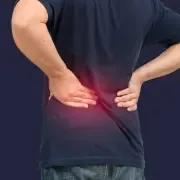Strengthening Your Core For A Healthy Back
In This Article
Strengthening Your Core For A Healthy Back
Elena
Updated on June 10, 2024
Medically verified by Dr. Arya
Fact checked by Sreemoyee

Orthopaedics
10 min read
A strong core is essential for maintaining a healthy back and overall well-being. Your core muscles include not only your abdominal muscles but also the muscles in your back, hips, and pelvis.
If you are someone who suffers from back pain, you know how frustrating it can be in your day to day life.
Strengthening your back muscles will help you even in small everyday activities like tying your shoes or closing a window etc.
If you are confused about how to strengthen your core, worry not, Karetrip is here to help you with just that.
In this blog we will explore why core strength is crucial for a healthy back, discuss key core muscles, and provide a comprehensive guide to exercises that can help you build a strong core.
Why Core Strength for a strong back matters
Core-strength exercises strengthen the core muscles. Core muscles include the abdominal muscles, back muscles and the muscles around the pelvis. Strong core muscles make it easier to do many physical activities.
Strong back muscles can also enhance athletic performance in activities such as swimming or climbing.
The major back muscles include:
Upper-back and mid-back muscles:
-
trapezius: moves your shoulder and shoulder blade
-
rhomboid: pulls your shoulder blade back
-
latissimus dorsi: pulls your arm down
Low-back muscles :
-
erector spinae: extends and stabilizes your spine.
-
The core muscles play a pivotal role in supporting your spine and maintaining good posture. A strong core helps:
-
Reduce Back Pain: Weak core muscles can lead to poor posture and an increased risk of back injuries. Strengthening these muscles can alleviate chronic back pain and prevent future discomfort.
-
Enhance Stability: Core muscles stabilize your body, allowing you to maintain balance and perform daily activities more efficiently. This stability is crucial for activities ranging from simple movements like walking to more complex tasks like lifting heavy objects.
-
Improve Posture: Good posture minimizes the strain on your spine and surrounding muscles. A strong core supports the natural curve of your spine, reducing the risk of developing posture-related issues.
-
Prevent Injuries: A robust core acts as a natural brace for your spine, protecting it during physical activities and reducing the likelihood of injuries.
Effective Core Exercises
- Abdominal crunch :
Lie on your back and place your feet on a wall so that your knees and hips are bent at 90-degree angles. Tighten the abdominal muscles. Raise your head and shoulders off the floor. To avoid straining your neck, cross your arms on your chest rather than locking them behind your head. Hold for three deep breaths.
- Bridge :
Lie on your back with your knees bent and feet flat on the floor, hip-width apart and parallel to each other. Place your arms at your sides, palms up. Relax your shoulders against the floor. Tighten your buttocks, then lift your hips up off the floor as high as is comfortable. Keep your hips even and spine neutral. Return to the starting position.
- Double-leg abdominal press :
Lie on your back with your knees bent . Keep your back in a neutral position, not arched and not pressed into the floor. Avoid tilting your hips. Tighten the abdominal muscles.
Raise your legs off the floor, one at a time, so that your knees and hips are bent at 90-degree angles. Rest your hands on top of your knees.
Push your hands against your knees while using the abdominal muscles to pull your knees toward your hands. Keep your arms straight. Hold for three deep breaths.
- Quadruped :
Start on your hands and knees. Place your hands directly below your shoulders, and line up your head and neck with your back. Tighten the abdominal muscles.
Raise your right arm off the floor and reach ahead. Hold for three deep breaths. Lower your right arm and repeat with your left arm.
Raise your right leg off the floor. Tighten the trunk muscles for balance. Hold for three deep breaths. Lower your right leg and repeat with your left leg.
For added challenge, raise your left arm and your right leg at the same time. Repeat with your right arm and left leg.
- Side plank :
Lie in a straight line on your right side. Support your upper body on your right forearm with your shoulder aligned directly over your elbow. Stack your left foot on top of your right foot. Rest your left hand on your side.
Tighten your abdominal muscles. Exhale as you lift your right hip and right leg off the floor and raise your left arm toward the ceiling. Keeping shoulders and hips in a straight line, balance on your right forearm and the side of your right foot.
Hold for 15 to 60 seconds. Return to the starting position. This is one rep. Finish all reps (2-4), then repeat on your left side. This completes one set.
- Superman :
Lie on your stomach with a rolled towel or a small pillow under your hips to support your back. You also might use a folded towel to support your head. Tighten the abdominal muscles.
Raise your right arm off the floor (top illustration). Hold for three deep breaths. Lower your right arm and repeat with your left arm.
Raise your right leg off the floor (bottom illustration). Hold for three deep breaths. Lower your right leg and repeat with your left leg.
- Bent-over row : Stand with a weight in your left hand and a bench or sturdy chair at your right side. Place your right hand and knee on the bench or chair seat.
Let your left arm hang directly under your left shoulder, fully extended toward the floor. Your spine should be neutral, and your shoulders and hips squared.
Squeeze your shoulder blades together, then bend your elbow to slowly lift the weight toward your ribs. Return to the starting position. Finish all reps, then repeat with the opposite arm. This completes one set.
- Reverse fly :
Holding a dumbbell in each hand, hinge forward at your hips until your torso forms a 45-degree angle with the floor, allowing the dumbbells to hang in front of you, palms facing each other. Have a slight bend in your elbows.
Engaging your core, lift your arms up and out, squeezing your shoulder blades at the top.
Slowly return to the starting position. Complete 1–3 sets of 8–12 reps.
- Basic swing :
Stand tall with your feet about shoulder-width apart. Hold a kettlebell with both hands, arms extended down in front of you so the kettlebell hangs between your legs.
Hinge forward at your hips, shift your weight onto your heels, and sit back, swinging the kettlebell back between your legs. Then press into your heels and stand up as you swing the kettlebell forward to chest height.
 6 min read
6 min readTop Orthopaedic Hospitals In Bangalore For Bone And Joint Care
 10 min read
10 min readImpact of Untreated Back Problems
 10 min read
10 min readNon-Surgical Treatments for Back Pain
Get a Callback Now
Tips for Effective Core Training
-
Consistency
-
Progression
-
Form
-
Variety
-
Integration
Your Safety Comes First
Consult with your doctor before starting a new exercise regimen, especially if you have not been active recently, or if you have any injuries (especially a history of back pain or injury) or an unstable chronic health condition, including these:
-
heart disease
-
asthma
-
high blood pressure
-
joint or bone disease
-
a neurologic illness
-
diabetes
-
a joint replacement.
It is important to practice safe exercise strategies whether working out at home or at the gym. Proper form is essential to avoid injury.
Strengthening your core is fundamental to maintaining a healthy back and overall physical health.
By understanding the key core muscles and incorporating a variety of effective exercises into your fitness routine, you can build a strong foundation that supports your spine, improves your posture, and reduces the risk of injuries.
Consistency, proper form, and progression are key to achieving the best results, so start incorporating these exercises into your routine and enjoy the benefits of a stronger, healthier core.
The information provided represents the views and opinions of Karetrip. It is crucial to conduct your own independent research before making any decisions regarding your healthcare journey Disclaimer
A strong core is crucial for maintaining a healthy back and overall well-being, impacting everyday activities and athletic performance.
Core muscles include the abdominal muscles, back muscles, and muscles around the pelvis, all of which support the spine and posture.
Strengthening your core can alleviate chronic back pain, improve stability, enhance posture, and prevent injuries.
Effective core exercises include abdominal crunches, bridges, double-leg abdominal presses, quadrupeds, side planks, supermans, bent-over rows, reverse flies, and basic swings.
Consistency in exercise routines ensures steady progress in core strength and overall fitness.
Proper form is essential in all exercises to maximize benefits and prevent injuries.
Gradual progression in intensity and difficulty of exercises is key to continuous improvement.
Integrating a variety of exercises into your routine targets different muscle groups for comprehensive core strengthening.
Consulting with a healthcare professional before starting a new exercise regimen is important, especially if you have pre-existing health conditions.
A strong core supports the spine, reduces the risk of back injuries, and enhances daily physical activities and athletic performance.
Source Links
Healthline: Medical information and health advice you can trust.
Top-ranked Hospital in the Nation - Mayo Clinic
Health Information and Medical Information - Harvard Health

